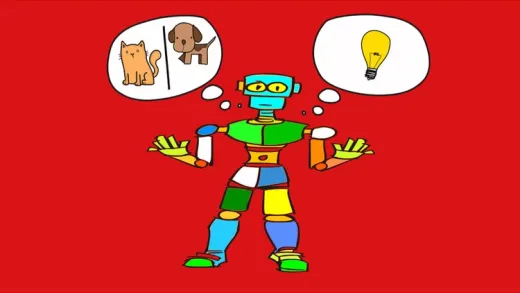Brief Summary
This course offers a friendly, practical dive into machine learning techniques you can actually use today. It's approachable and visual, with lots of hands-on Python coding to help you understand machines and language processing concepts without getting overwhelmed.
Key Points
-
Down-to-earth and practical approach to machine learning.
-
Focus on supervised and unsupervised learning techniques.
-
Hands-on experience with Python coding and source code.
-
Visual explanations to make learning fun.
-
Quirky examples and active learning through quizzes.
Learning Outcomes
-
Identify when to use machine learning in real-life situations.
-
Choose appropriate solutions for different types of machine learning problems.
-
Use Python for text classification and summarization tasks.
-
Understand and implement various machine learning algorithms like Naive Bayes and K-means.
-
Mitigate overfitting using ensemble learning techniques.
About This Course
A down-to-earth, shy but confident take on machine learning techniques that you can put to work today
Prerequisites: No prerequisites, knowledge of some undergraduate level mathematics would help but is not mandatory. Working knowledge of Python would be helpful if you want to run the source code that is provided.
Taught by a Stanford-educated, ex-Googler and an IIT, IIM - educated ex-Flipkart lead analyst. This team has decades of practical experience in quant trading, analytics and e-commerce.
This course is a down-to-earth, shy but confident take on machine learning techniques that you can put to work today
Let’s parse that.
The course is down-to-earth : it makes everything as simple as possible - but not simpler
The course is shy but confident : It is authoritative, drawn from decades of practical experience -but shies away from needlessly complicating stuff.
You can put ML to work today : If Machine Learning is a car, this car will have you driving today. It won't tell you what the carburetor is.
The course is very visual : most of the techniques are explained with the help of animations to help you understand better.
This course is practical as well : There are hundreds of lines of source code with comments that can be used directly to implement natural language processing and machine learning for text summarization, text classification in Python.
The course is also quirky. The examples are irreverent. Lots of little touches: repetition, zooming out so we remember the big picture, active learning with plenty of quizzes. There’s also a peppy soundtrack, and art - all shown by studies to improve cognition and recall.
What's Covered:
Machine Learning:
Supervised/Unsupervised learning, Classification, Clustering, Association Detection, Anomaly Detection, Dimensionality Reduction, Regression.
Naive Bayes, K-nearest neighbours, Support Vector Machines, Artificial Neural Networks, K-means, Hierarchical clustering, Principal Components Analysis, Linear regression, Logistics regression, Random variables, Bayes theorem, Bias-variance tradeoff
Natural Language Processing with Python:
Corpora, stopwords, sentence and word parsing, auto-summarization, sentiment analysis (as a special case of classification), TF-IDF, Document Distance, Text summarization, Text classification with Naive Bayes and K-Nearest Neighbours and Clustering with K-Means
Sentiment Analysis:
Why it's useful, Approaches to solving - Rule-Based , ML-Based , Training , Feature Extraction, Sentiment Lexicons, Regular Expressions, Twitter API, Sentiment Analysis of Tweets with Python
Mitigating Overfitting with Ensemble Learning:
Decision trees and decision tree learning, Overfitting in decision trees, Techniques to mitigate overfitting (cross validation, regularization), Ensemble learning and Random forests
Recommendations: Content based filtering, Collaborative filtering and Association Rules learning
Get started with Deep learning: Apply Multi-layer perceptrons to the MNIST Digit recognition problem
A Note on Python: The code-alongs in this class all use Python 2.7. Source code (with copious amounts of comments) is attached as a resource with all the code-alongs. The source code has been provided for both Python 2 and Python 3 wherever possible.
Identify situations that call for the use of Machine Learning
Understand which type of Machine learning problem you are solving and choose the appropriate solution
Use Machine Learning and Natural Language processing to solve problems like text classification, text summarization in Python









Xavier D.
Lots of interesting theory but without the practical application. Overall awful pronunciation and presentation. All the Q&R are not answered (do not count on support). Most of the code is outdated (was done in 2016). On the positive side: many interesting topics covered.